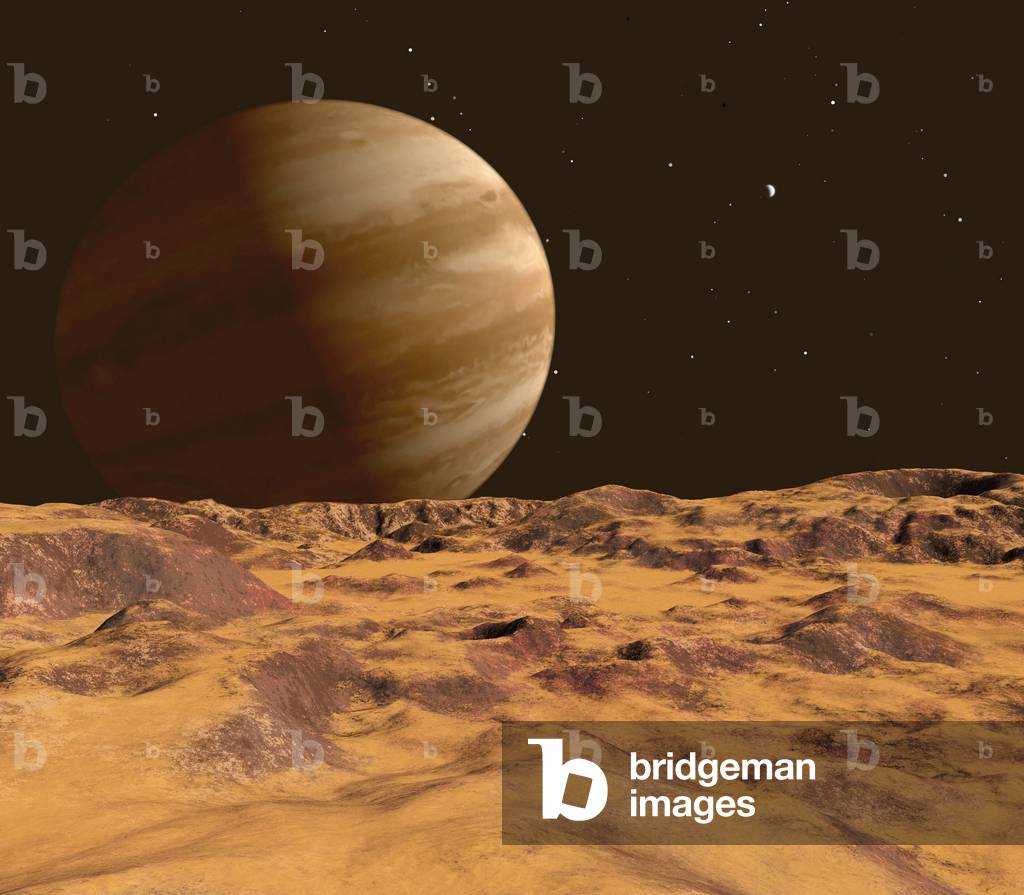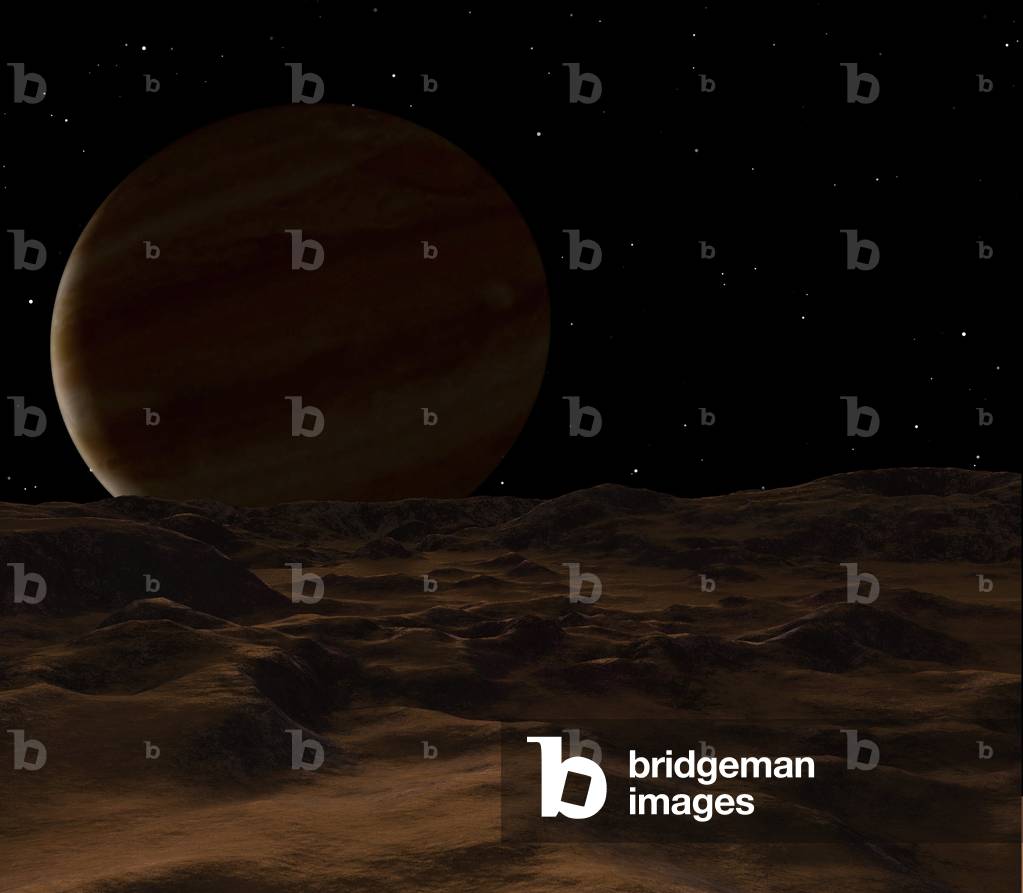
PIX4629924
Size comparison: Earth, Moon and Galilean satellites - Jupiter's four largest satellites and Earth and the Moon compared - Jupiter's four largest satellites, called Galilean satellites, compared to Earth and Moon. At the top, from left to right, in order of their distance to the planet Jupiter, we find Io, Europe, Ganymede and Callisto. Ganymede is the largest satellite in the solar system. Jupiter's four largest satellites, also known as the “” Galilean”” satellites since they were first observed by the Italian astronomer Galileo over 400 years ago, are worlds in their own right. Top row, left to right, in order from their distances from Jupiter, are: Io, Europa, Ganymede, Callisto Io is the most volcanic world in the Solar System, resurfacing itself continually with extremely hot and massive eruptions that spew material over 200 miles into space. Europa is about the same size as Earth's Moon, however unlike the Moon which is made up mostly of dry silicate materials, Europa is believed to be composed primarily of water ice, and may even contain a vast ocean of liquid salt water beneath its crust. For this reason, Europa is now emerging as one of the most viable candidates for hosting extraterrestrial life. Ganymede and Callisto are each larger than the planet Mercury, while Ganymede is the largest of all satellites in the Solar System. Io, Europa, and Ganymede are locked in a gravitational resonance where for every orbit Ganymede completes, Europa completes two orbits and Io completes four
DC
































